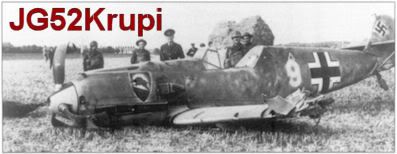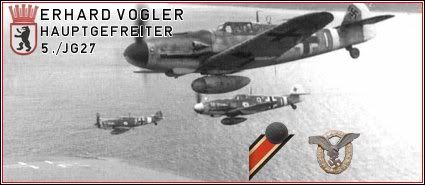
 |
|
|||||||
| Pilot's Lounge Members meetup |
 |
|
|
Thread Tools | Display Modes |
|
#1
|
|||
|
|||
|
Hello everyone
As we have someone speaking russian in the german forum, BlackSix asked him for Informations about the Startup Procedure of german planes and the motor-damage that can occure if this is done wrong (Engine not warmed up, etc.). What we want is informations about: What should happen if you run the engine full speed before proper temperatures have been reached? What should happen if charching pressure is too high over a long time? etc. This is a chance to make the game better, take it! Thanks in advance Continu0 @Foobar, danke für die gute Formulierung, ich hab mir erlaubt sie gleich zu übernehmen!
__________________
AMD Penom ll 6x 1055T Processor 2.8 GHz // 8GB Ram // XFX Radeon HD 7870 Black Edition DD (2048 MB Memory DDR5, GPU 1055MHz) // Windows 7 Professional 64 Bit Version Saitek x52 // Saitek Throttle Quadrant // Saitek Pro Flight Rudder Pedals // Track IR 5 Last edited by Continu0; 12-21-2011 at 12:14 PM. Reason: make things clearer. |
|
#2
|
|||
|
|||
|
somebody posted a video with a g2 engine sound and in the video is the explanation of each sound the first part of it is the warming up and taxing
|
|
#3
|
|||
|
|||
|
S!
Some note from a veteran, had to remember to set the prop pitch to 11:30 manually then switch back fro Automatic before take-off or the engine would go over-rpm = possible crash and burn. |
|
#4
|
||||
|
||||
|
Quote:
__________________
 Gigabyte X58A-UD5 | Intel i7 930 | Corsair H70 | ATI 5970 | 6GB Kingston DDR3 | Intel 160GB G2 | Win 7 Ultimate 64 Bit |
MONITOR: Acer S243HL. CASE: Thermaltake LEVEL 10. INPUTS: KG13 Warthog, Saitek Pedals, Track IR 4. |
|
#5
|
|||
|
|||
|
~S~
When You start engine in 109 and it will not start at first blow, you have to wait until starter will stop spinning...In ClOD it is stoping way to quick...Refer to 109e4 manual
__________________
 Asus P6T V2 Deluxe, I7 930, 3x2 GB RAM XMS3 Corsair1333 Mhz, Nvidia Leadtek GTX 470, Acer 1260p screen projector, Track IR 4 OS ver5, Saitek Pro Flight Rudder, Saitek X52, Win 7 x64 ultimate |
|
#6
|
|||
|
|||
|
Ok, so I translated the important parts of the Bf 109 E series, hope this helps:
Start-Up Procedure: - Close canopy, open right window - Gear switch to off - Battery master on (pull switch behind seat, right side) - Fuel cock open - Throttle idle, set fueltank pressurisation to "entlüften" (=Ventilate) - Pressurize min. 0,5 Atü via Fuelpump - Crank well to load up starter - Primer: 2-3 times (4-5 in cold weather), if engine is warm only 1-2 - Check prop clear, then insert key and select M1+2 - Pull "Zündverstellung and hold - Pull Starter - Relase both after engine starts - Oilpressure must rise in 3-5 seconds to 6-8 atü, if not shut down immediately Warm-Up Procedure: - Open water radiator as required - In cold wheather: close oil radiator - Slowly increase rpm after oilpressure starts to drop until reaching 1000 rpm. Try to maintain oilpressure between 5 and 6 atü Checks during Warm-Up Procedure: - Check magnetos by switching the "Zündschalter" at different rpms, watch for smooth running - At 1400 rpm check fuel pump: fuelcock in position P2 and P1 for 1/2 minute each, watch for excessive fluctuations of fuel pressure or rough running of engine. - At 1900 rpm check electrical system: Switch off battery master, switch on avionics master. After check switch off avionics master and switch on battery master again Before Taxi Check: - Close canopy - Check fuel cock open, fuel pressurisation on "ventilate" - Open water and oil radiator - Check battery master "on" - Check engine instruments - Set prop pitch to 12 o´clock - Check gear (green lights), also check mechanical indicator - Set trim to 0 to +1° - Under high humidity conditions or temperatures belo 0°C turn on pitot heat Taxiing: - Flaps Up - Keep water temp below 94°C - For thight turns taxi straight ahead and apply throttle, then start turn by braking and throttle down. Take-Off: - Set flaps to 20° - Start take-off roll - After lift off gain speed until reaching best-climb speed (about 250 Km/h) - Retract gear while accelerating (Set gear handle to "up", after gear is fully up the gear handle swiches automatically back to "neutral"). If gear handle does not switch back to "neutral" by itself pull the lever. - Retract flaps and trim (both wheels can be turned simultaneously). Note: If fuel pump fails emergency fuel pumping by handpump is NoT possible! Flight: Limitations: Vmax For flap operations: 250 For flaps fully down: 250 For gear down: 350 For gear operatiom: 220 For diving: 750 Best IAS for climb: Altitude: 0 1000 2000 3000 4000 5000 6000 7000 Va (IAS): 250 243 236 229 222 215 208 200 - Attention! If fuel pressure drops below 1 Atü at high altitudes switch on fuel pressurisation (Switch to "Behälter unter Druck") Prop Pitch Operation: Set Prop pitch to keep rpm within the following parameters: Increased time limited power: 2468 rpm at 1,45 ata Time limited power: 2368 rpm at 1,35 ata Increased power (non time limited): 2326 rpm at 1,3 ata Oil Pressure and Temp limits: Non-limited: intake 30°C to 75°C, exit 95°C Short time: intake 80°C, exit 105°C oilpressure: min 2,5 atü, max 6 atü Water Temperature: Close to ground at least 60°C Max temp for altitude (in km): 0 2 4 6 8 10 100°C 95°C 91°C 87°C 82°C 78°C Fuelpressure: min 1,1 atü, max 1,5 atü Fuel indication during flight: Good indication only in straight and level flight, if reserve light is on fuel is sufficent for about 10 min Radiator operations: For normal outside temperatures keep water rad half closed, if outside temp drops close accordingly. After radiator operations trimming is required! Note: The aircrafts speed is dependant on the radiator position. To archieve maximum speed open radiator only as much as requierd for safe temperatures! Landing: - Slow down to about 220 Km/h - Set prop pitch to 12 o´clock - Lower gear, gear lever resets to neutral automatically after operation. If gear is not fully lowered after opreation set switch to "lower" again Signal sounds if flaps are lowered while the gear is not fully down! - Flaps full down (40°), trim the aircraft! (Both wheels can be operated simultaeously) - Final approach with about 150 Km/h, take note that the aircraft looses speed fast if angle of attack is increased! - If sight through windshield is not possible open and look through forward left window Thats it for now, to tired to do the rest. Still missing is the abnormals and emergencies part. If you´re interested let me know, then I´ll do it tomorrow. Last edited by =Chuck=; 12-19-2011 at 11:52 PM. |
|
#7
|
|||
|
|||
|
thanks for posting that, it really helps
|
|
#8
|
|||
|
|||
|
Nice, keep it comming! It would be nice to have more informations about potential damage, but this seems to be a difficult task.
I will progress all the info to the german forum asap after i wrote my exams! (3-5 days)
__________________
AMD Penom ll 6x 1055T Processor 2.8 GHz // 8GB Ram // XFX Radeon HD 7870 Black Edition DD (2048 MB Memory DDR5, GPU 1055MHz) // Windows 7 Professional 64 Bit Version Saitek x52 // Saitek Throttle Quadrant // Saitek Pro Flight Rudder Pedals // Track IR 5 |
|
#9
|
|||
|
|||
|
Like Continu0 wrote we're asking for consequences if engines won't be treated properly. Don't post manuals, we have them all.
At the moment we only suffer consequences if RPM is too high or if temperatures water/oil are too high. What we need is: What should happen if you run the engine full speed before proper temperatures have been reached? What should happen if charching pressure is too high over a long time? etc. |
|
#10
|
|||
|
|||
|
Guys,
I've found an excellent article explaining the reasons for and the type of damage that occurs when you fail to pre-warm an aircraft engine or go to full throttle before it warms up sufficiently. http://www.avweb.com/news/maint/182846-1.html It's as much about bearing and piston clearances as the viscosity of the oil - which was new to me. Essentially, on a cold engine the clearances between the moving parts are much reduced (or almost zero sometimes) which means less space for oil to penetrate and more metal to metal contact causing bearing wear, spun bearings and piston scuffing etc. While there is a danger of engine seizure on the ground, far more dangerous is the potential for failure during or after takeoff due to the hidden damage caused on startup. Interesting quote: "In less than a minute, a single cold start without proper preheating can produce more wear on your piston aircraft engine than 500 hours of normal cruise operation. If it's cold enough, a single cold start can cause the catastrophic destruction of an engine shortly after takeoff. This is serious stuff, folks!" Wouldn't it be great to see guys falling out of the sky or forced to operate under reduced power because they abused their precious powerplant? Last edited by Sutts; 12-21-2011 at 11:09 AM. |
 |
|
|